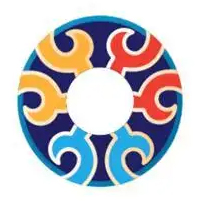Maintenance Guide for Cloisonné Products
Jingtailan crafts have been increasingly popular in recent years. These crafts are relatively easy to preserve, but still require some maintenance knowledge. This article will summarize the relevant knowledge of Jingtailan product maintenance to help readers better enjoy and protect these exquisite crafts.
1. Placement Environment
Due to the limitations of the raw materials used for cloisonne, maintenance work mainly involves two aspects: metal and enamel. Therefore, it is important to place cloisonne products in an environment without acid or alkali tendencies and as little dust as possible. With proper care, high-quality cloisonne works can maintain their brightness for over 50 years. However, since cloisonne is made of corrosion-resistant metal and brittle enamel, it is best to use sweat-absorbent gloves when handling to avoid direct contact. Do not wash with water or wipe with a damp cloth, and do not come into contact with acidic or corrosive substances. Use a dry feather duster to remove surface dust, then wipe with a soft cotton cloth or pure wool fabric, and finally spray a wax polish to maintain its brightness and texture. In addition, handle with care to avoid collisions and ensure the stability of the base or wooden frame.
2. Enamel Cleaning
Cleaning the enamel of cloisonne should be done in a dry state. First, use a duster (chicken feathers are best) to remove surface dust, then wipe with a soft cotton cloth.
3. Apply Wax Polish
After dusting and wiping the metal and enamel, spray wax polish to maintain the beauty and texture of the cloisonné product itself.
4. Use caution when washing with water and damp cloth.
When cleaning the surface of cloisonné works, do not use water or wet cloth to wipe, and absolutely avoid contact with acidic, alkaline or corrosive substances.
5. Use a soft cloth to wipe.
Since cloisonné products usually have large areas of metal parts and gold-plating process, soft cotton cloth or fabric with hair-like properties should be used for cleaning.
6. Moisture prevention.
The cloisonné enamel surface is very different from the ceramic glaze surface, and the cloisonné enamel surface has many tiny sand holes, which are the characteristics of cloisonné materials and craftsmanship. Therefore, moisture prevention should be taken into account during cleaning to prevent sand hole contamination and discoloration.
7. Prompt repair.
If the gilding of the cloisonné product is found to change color or wear, or if there are small porcelain hard injuries on the enamel surface, prompt repair should be carried out, so as not to affect the value of the cloisonné.
8. Check the stability of the wooden base.
Most cloisonné products are equipped with a wooden base. Please regularly check the size of the wooden base and the safety of the wooden frame.
9. Apply wax to prevent rust.
The inside of cloisonne vases and other objects often have exposed copper cores. In this case, wax treatment should be carried out in a timely manner to prevent rust.
10. Safe placement.
High-value cloisonne works are usually not daily necessities, but art collections. Do not place them in high or unstable places to avoid accidental dropping or damage.
These are some common knowledge about collecting and maintaining cloisonne. I hope the content of this article can help readers to better extend the life of cloisonne products and maintain their color and beauty.

